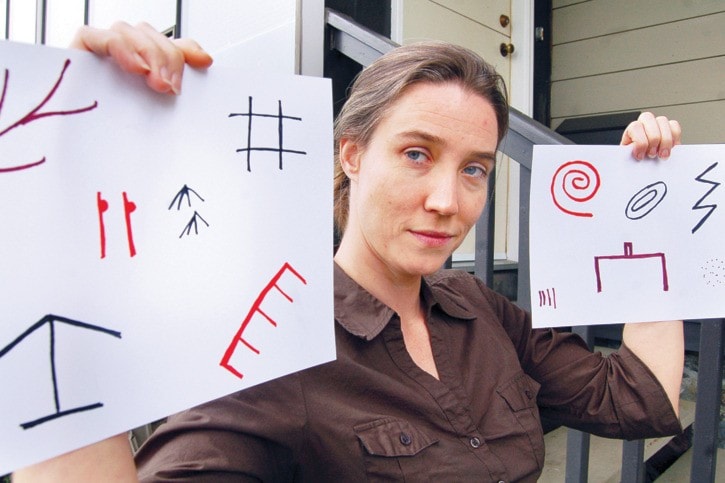Unlocking hidden symbols amid Ice Age cave paintings has earned a Victoria anthropology scholar a chance to hobnob with some of the most influential thinkers in the world.
University of Victoria anthropology PhD student Genevieve von Petzinger gained international media fame last year after demonstrating that Ice Age people used a small number of geometric shapes as a rudimentary form of written communication, dating back about 30,000 years.
It’s the earliest form of graphic communication discovered — a precursor to writing systems we have today.
This year, that work continues to expand and receive attention — the 34-year-old has been named one of 20 TEDGlobal 2011 Fellows, among other honours. The Technology, Entertainment, Design (TED) nonprofit allows big thinkers to spread cutting edge ideas on culture, society, science and technology at conferences around the world.
“As a TED Fellow, it’s an opportunity to network with tons of different disciplines,” said Von Petzinger, a one-time Langford resident who now lives on the UVic campus. “But I’m not on the big stage yet, I’m not up there with Bill Gates and Al Gore.”
As a TEDGlobal Fellow, Von Petzinger gets four minutes to present at the TEDGobal 2011 conference in Edinburgh, Scotland. Instead of trying to distill the sum total of her research into a few fleeting moments, she plans to shatter the myth of “cavemen” as being thick-browed brutes.
“I’ll get to educate people that cavemen are us,” she said. “They’ve got the same brains, bodies and capacity we do. They are 100 per cent us.
“It will help set the stage and context to why they were capable of using complicated geometric signs.”
Adding a new dimension to her research, in January Von Petzinger was able to photograph and study a 15,000 year old necklace in France made of deer teeth. Each tooth holds one or more geometric symbols similar to those behind her research, providing an important clue on how Ice Age people grouped shapes into different “words.”
“The teeth are really important, it’s a first good step to get into the heads of Ice Age people from their perspective,” she said. “We can see how the divide, organize and structure (the symbols). The teeth are perfect units. It almost gives a key or a legend.
“It gives insight if we find the same configuration on cave walls.”
Von Petzinger expects to further expand her work on the Ice Age code over the next two years by photographing cave art and symbols in Spain, France and parts of Eastern Europe. She wants to see the markings first hand to get a sense of what are deliberate etchings, and what are just lines on a wall.
Von Petzinger stresses that cave symbols aren’t a writing system, but are an early form of communication, possibly linked to clans, territorial divisions or religious meaning.
“One theory gaining traction is spiritual reasons or shamanism,” she said. “If you look at a lot of rock art, it’s generally created for religious reasons.”
For more on TED, see ted.com.
